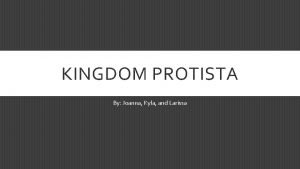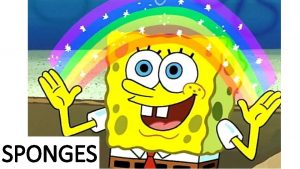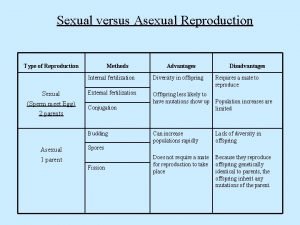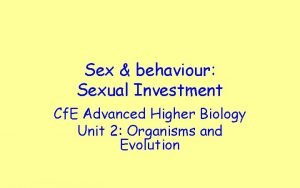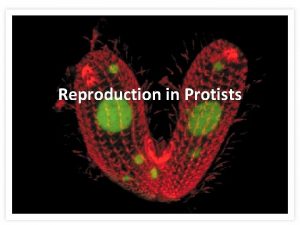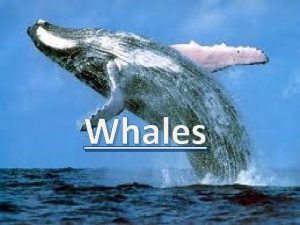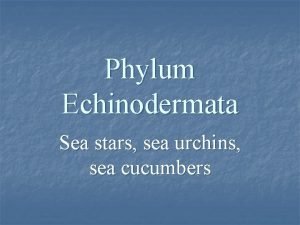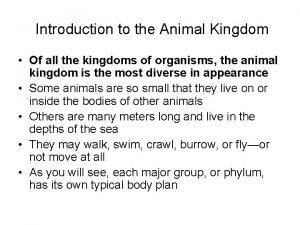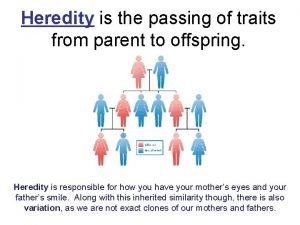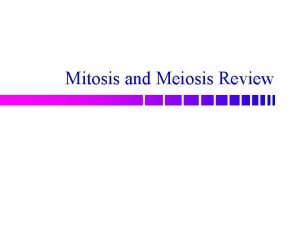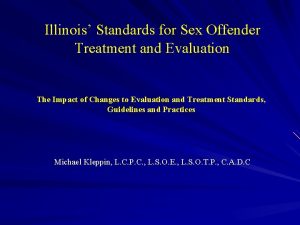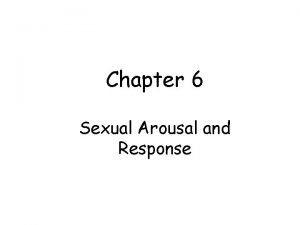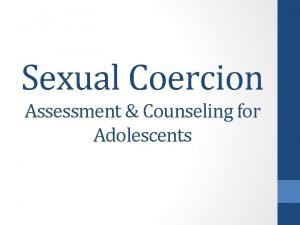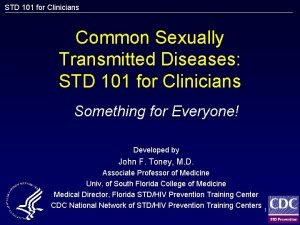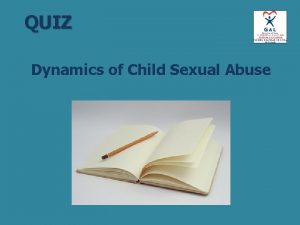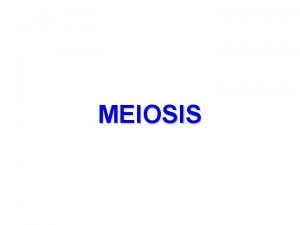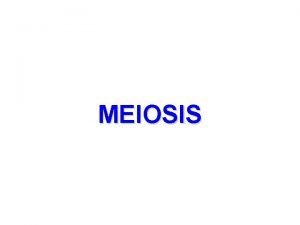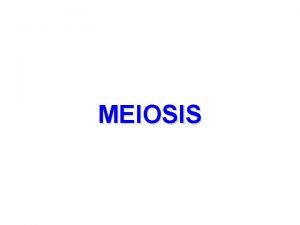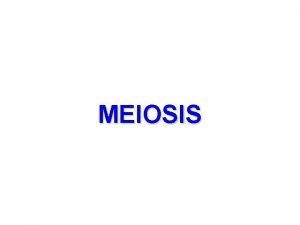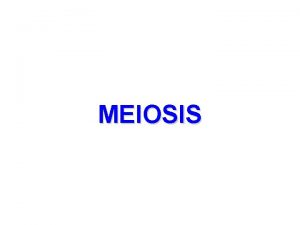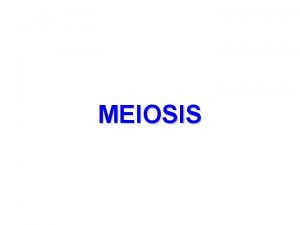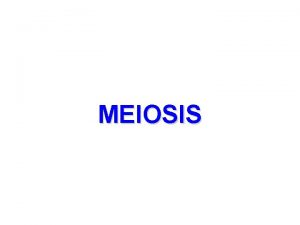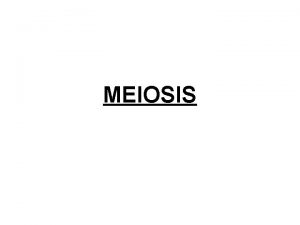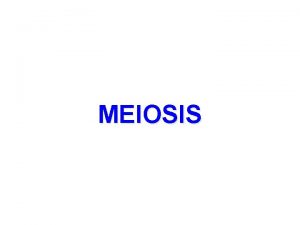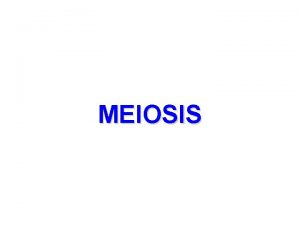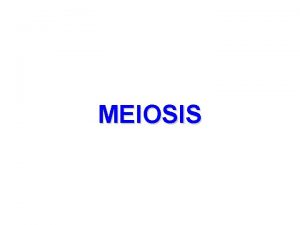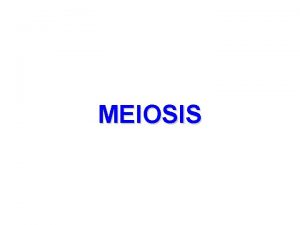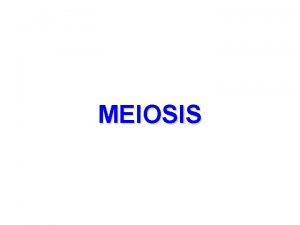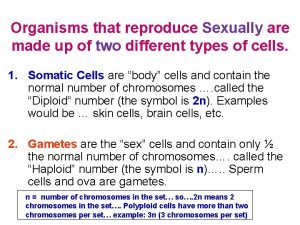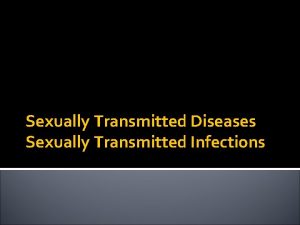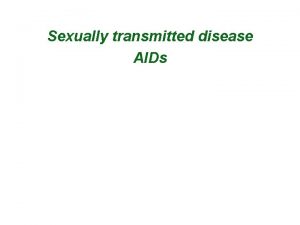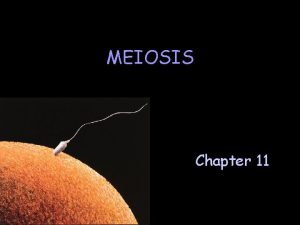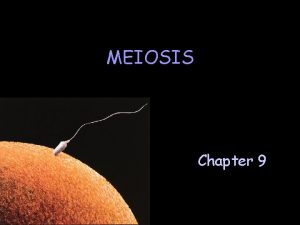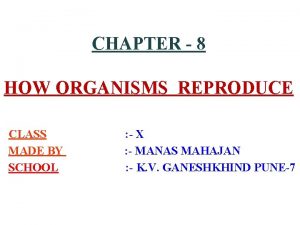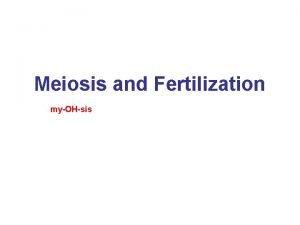MEIOSIS Organisms that reproduce Sexually are made up


















































- Slides: 50

MEIOSIS

Organisms that reproduce Sexually are made up of two different types of cells. 1. Somatic Cells are “body” cells and contain the normal number of chromosomes …. called the “Diploid” number (the symbol is 2 n). Examples would be … skin cells, brain cells, etc. 2. Gametes are the “sex” cells and contain only ½ the normal number of chromosomes…. called the “Haploid” number (the symbol is n)…. . Sperm cells and ova are gametes. n = number of chromosomes in the set… so…. 2 n means 2 chromosomes in the set…. Polyploid cells have more than two chromosomes per set… example: 3 n (3 chromosomes per set)

Gametes • The Male Gamete is the Sperm and is produced in the male gonad the Testes. • The Female Gamete is the Ovum (ova = pl. ) and is produced in the female gonad the Ovaries.

During Ovulation the ovum is released from the ovary and transported to an area where fertilization, the joining of the sperm and ovum, can occur…… fertilization, in Humans, occurs in the Fallopian tube. Fertilization results in the formation of the Zygote. (fertilized egg) Sperm + Ovum (egg) fertilization Zygote

Fertilization • The fusion of a sperm and egg to form a zygote • A zygote is a fertilized egg n=23 egg sperm n=23 2 n=46 zygote

Chromosomes • If an organism has the Diploid number (2 n) it has two matching homologues per set. One of the homologues comes from the mother (and has the mother’s DNA). … the other homologue comes from the father (and has the father’s DNA). • Most organisms are diploid. Humans have 23 sets of chromosomes… therefore humans have 46 total chromosomes…. . The diploid number for humans is 46 (46 chromosomes per cell).

Homologous Chromosomes • Pair of chromosomes (maternal and paternal) paternal that are similar in shape and size. • Homologous pairs (tetrads) carry genes controlling the same inherited traits. • Each locus (position of a gene) is in the same position on homologues. • Humans have 23 pairs of homologous chromosomes. 22 pairs of autosomes 1 pair of sex chromosomes

Homologous Chromosomes (because a homologous pair consists of 4 chromatids it is called a “Tetrad”) eye color locus hair color locus Paternal Maternal

Humans have 23 Sets of Homologous Chromosomes Each Homologous set is made up of 2 Homologues. Homologue

Autosomes (The Autosomes code for most of the offspring’s traits) In Humans the “Autosomes” are sets 1 - 22

Sex Chromosomes The Sex Chromosomes code for the sex of the offspring. ** If the offspring has two “X” chromosomes it will be a female. ** If the offspring has one “X” chromosome and one “Y” chromosome it will be a male. In Humans the “Sex Chromosomes” are the 23 rd set XX chromosome - female XY chromosome - male

Sex Chromosomes “Sex Chromosomes” ……. the 23 rd set This person has 2 “X” chromosomes… and is a female. 23

Meiosis is the process by which ”gametes” (sex cells) , with half the number of chromosomes, are produced. During Meiosis diploid cells are reduced to haploid cells Diploid (2 n) Haploid (n) If Meiosis did not occur the chromosome number in each new generation would double…. The offspring would die.

Meiosis is Two cell divisions (called meiosis I and meiosis II) II with only one duplication of chromosomes.

Meiosis in males is called spermatogenesis and produces sperm. Meiosis in females is called oogenesis and produces ova.

Spermatogenesis Secondary Spermatocyte human sex cell 2 n=46 sperm n=23 Primary Spermatocyte n=23 Secondary Spermatocyte diploid (2 n) n=23 4 sperm cells are produced from each primary spermatocyte. meiosis I haploid (n) n=23 meiosis II

Meiosis Parent cell 1 st division 2 nd division 4 gametes

Mitosis Meiosis Produce identical cells Diploid cells Unique cells (different from the parent) Haploid cells Takes place whole life of organism Takes place at only certain times Asexual reproduction Sexual reproduction Body cells Germ cells

• • Meiosis – key differences from mitosis Meiosis reduces the number of chromosomes by half. Daughter cells differ from parent, and each other. Meiosis involves two divisions, Mitosis only one. Meiosis I involves: – homologous chromosomes pair up. – crossing over of non-sister chromatids). – In Metaphase I, homologous pairs line up at metaphase plate. – In Anaphase I, sister chromatids do NOT separate. – End Product, separation of homologous pairs of chromosomes, rather than sister chromatids of individual chromosome.

Oogenesis *** The polar bodies die… only one ovum (egg) is produced from each primary oocyte.

Interphase I • Similar to mitosis interphase. • Chromosomes replicate (S phase). • Each duplicated chromosome consist of two identical sister chromatids attached at their centromeres • Centriole pairs also replicate.

Interphase I • Nucleus and nucleolus visible. chromatin nuclear membrane cell membrane nucleolus

Meiosis I (four phases) • Cell division that reduces the chromosome number by one-half. • four phases: phases a. prophase I b. metaphase I c. anaphase I d. telophase I

Prophase I • Longest and most complex phase. • 90% of the meiotic process is spent in Prophase I • Chromosomes condense. • Synapsis occurs: homologous chromosomes come together to form a tetrad • Tetrad is two chromosomes or four chromatids (sister and nonsister chromatids).

Prophase I - Synapsis Homologous chromosomes sister chromatids Tetrad sister chromatids

During Prophase I “Crossing Over” occurs. Crossing Over is one of the Two major occurrences of Meiosis (The other is Non-disjunction) • During Crossing over segments of nonsister chromatids break and reattach to the other chromatid The Chiasmata (chiasma) are the sites of crossing over

Crossing Over creates variation (diversity) in the offspring’s traits. Tetrad nonsister chromatids chiasmata: site of crossing over variation

Question: • A cell containing 20 chromosomes (diploid) at the beginning of meiosis would, at its completion, produce cells containing how many chromosomes? chromosomes

Answer: • 10 chromosomes (haploid)

Question: • A cell containing 40 chromatids at the beginning of meiosis would, at its completion, produce cells containing how many chromosomes? chromosomes

Answer: • 10 chromosomes

Prophase I spindle fiber aster fibers centrioles

Metaphase I • Shortest phase • Tetrads align on the metaphase plate • INDEPENDENT ASSORTMENT OCCURS: 1. Orientation of homologous pair to poles is random. 2. Variation 3. Formula: 2 n Example: 2 n = 4 then n = 2 thus 22 = 4 combinations

Metaphase I OR metaphase plate

Anaphase I • Homologous chromosomes separate and move towards the poles. • Sister chromatids remain attached at their centromeres

Anaphase I

Telophase I • Each pole now has haploid set of chromosomes • Cytokinesis occurs and two haploid daughter cells are formed.

Telophase I

Meiosis II • No interphase II (or very short - no more DNA replication) replication • Remember: Meiosis II is similar to mitosis

Prophase II • same as prophase in mitosis

Metaphase II • same as metaphase in mitosis metaphase plate

Anaphase II • same as anaphase in mitosis • sister chromatids separate

Telophase II • Same as telophase in mitosis • Nuclei form. • Cytokinesis occurs. • Remember: four haploid daughter cells produced. gametes = sperm or egg

Telophase II

Non-disjunction is one of the Two major occurrences of Meiosis (The other is Crossing Over) • Non-disjunction is the failure of homologous chromosomes, or sister chromatids, to separate during meiosis. • Non-disjunction results with the production of zygotes with abnormal chromosome numbers…… remember…. An abnormal chromosome number (abnormal amount of DNA) is damaging to the offspring.

Non-disjunctions usually occur in one of two fashions. • The first is called Monosomy, the second is called Trisomy. If an organism has Trisomy 18 it has three chromosomes in the 18 th set, Trisomy 21…. Three chromosomes in the 21 st set. If an organism has Monosomy 23 it has only one chromosome in the 23 rd set.

Common Non-disjunction Disorders • • Down’s Syndrome – Trisomy 21 Turner’s Syndrome – Monosomy 23 (X) Kleinfelter’s Syndrome – Trisomy 23 (XXY) Edward’s Syndrome – Trisomy 18

Amniocentesis • An Amniocentesis is a procedure a pregnant woman can have in order to detect some genetics disorders…. . such as non-disjunction.

Amniocentesis Amniotic fluid withdrawn

Karyotype (picture of an individual’s chromosomes) One of the ways to analyze the amniocentesis is to make a Karyotype What genetic disorder does this karyotype show? Trisomy 21…. Down’s Syndrome
 Animal like protists
Animal like protists Spongia officinalis
Spongia officinalis Do sea urchins reproduce sexually or asexually
Do sea urchins reproduce sexually or asexually How do annelids reproduce
How do annelids reproduce How do birds mate diagram
How do birds mate diagram Do protists reproduce sexually
Do protists reproduce sexually Class aves
Class aves Whale phylum
Whale phylum Sea cucumber dissection
Sea cucumber dissection Class scyphozoa
Class scyphozoa African eye worm
African eye worm Mikael ferm
Mikael ferm How the uniform offspring of your creature
How the uniform offspring of your creature Organisms that reproduce asexually
Organisms that reproduce asexually Meiosis has 8 main phases true or false
Meiosis has 8 main phases true or false Competitive interaction
Competitive interaction Organisms
Organisms Tôn thất thuyết là ai
Tôn thất thuyết là ai Ngoại tâm thu thất chùm đôi
Ngoại tâm thu thất chùm đôi Chiến lược kinh doanh quốc tế của walmart
Chiến lược kinh doanh quốc tế của walmart Gây tê cơ vuông thắt lưng
Gây tê cơ vuông thắt lưng Block av độ 2
Block av độ 2 Tìm vết của đường thẳng
Tìm vết của đường thẳng Sau thất bại ở hồ điển triệt
Sau thất bại ở hồ điển triệt Thơ thất ngôn tứ tuyệt đường luật
Thơ thất ngôn tứ tuyệt đường luật Con hãy đưa tay khi thấy người vấp ngã
Con hãy đưa tay khi thấy người vấp ngã Thơ thất ngôn tứ tuyệt đường luật
Thơ thất ngôn tứ tuyệt đường luật Meisis 1 and 2
Meisis 1 and 2 Chapter 10 section 1 meiosis answer key
Chapter 10 section 1 meiosis answer key Chapter 10 meiosis 1 and meiosis 2
Chapter 10 meiosis 1 and meiosis 2 When does crossing over occur during meiosis?
When does crossing over occur during meiosis? Prophase 2
Prophase 2 Mitosis vs meiosis
Mitosis vs meiosis What is the difference between mitosis and meiosis 2
What is the difference between mitosis and meiosis 2 Prokaryotic vs eukaryotic
Prokaryotic vs eukaryotic Chapter 24 sexually transmitted diseases and hiv/aids
Chapter 24 sexually transmitted diseases and hiv/aids Sexually dimorphic meaning
Sexually dimorphic meaning Chapter 24 lesson 1 sexually transmitted diseases
Chapter 24 lesson 1 sexually transmitted diseases Sexual harassment training quiz
Sexual harassment training quiz Sexually transmitted diseases
Sexually transmitted diseases Unokais
Unokais Sexually dangerous persons act illinois
Sexually dangerous persons act illinois Sexual arousal in men
Sexual arousal in men What is frustrated
What is frustrated Atis sexually or asexually
Atis sexually or asexually What is sexual coersion
What is sexual coersion Chapter 25 sexually transmitted infections and hiv/aids
Chapter 25 sexually transmitted infections and hiv/aids Std
Std Sexually transmitted diseases
Sexually transmitted diseases Was i sexually abused as a child quiz
Was i sexually abused as a child quiz Vascular plants vs nonvascular plants
Vascular plants vs nonvascular plants
